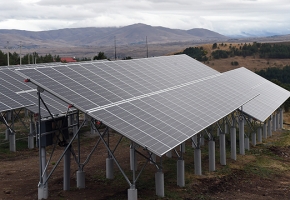Scientists discover 'key stepping stone' to the origin of life

Scientists have simulated the formation of fatty acids, a key component in the assembly of Earth's first cells. The discovery not only offers key insights to the earliest moments of life on the planet, but it also shines a light on how life might start on other moons and planets.
The first forms of life on Earth emerged over 3.5 billion years ago from inert geological materials. The exact location of this emergence is still unclear, but many scientists believe that the earliest life forms appeared around deep-sea hydrothermal vents.
Hydrothermal vents are like rocky chimneys on the ocean floor which spew out plumes of superheated fluid from magma beneath the Earth's crust. "Hydrothermal vent sites, and in particular alkaline hydrothermal vents, are unique in bringing together several key threads in origins of life theories together," told Jon Telling, a reader in biogeochemistry at Newcastle University in the UK.
“But for life to form at these vents, several key ingredients had to come together. "Broadly, scientists have focused on molecules that either store and transfer biological information (e.g. nucleic acids, DNA or RNA); catalyse reactions within cells (e.g. amino acids, [the building blocks of proteins]); or make cell membranes (giving a cell its own chemical identify separate from the external environment) e.g. fatty acids."
This last category, the fatty acids, is the focus of Telling's latest paper, lead by postdoctoral research associate at Durham University, Graham Purvis.
Fatty acids are long organic molecules with regions that both attract and repel water. Therefore, when they are placed in a watery environment they automatically come together in cell-like compartments, with the water-attracting parts on the outside and water-repelling parts on the inside. It is these molecules that would have formed the first cell membranes, isolating and protecting the inner workings of the cell from the world around it.
In their study the team were able to demonstrate just how easily these long-chain fatty acids can form under the replicated conditions of a hydrothermal vent.
"This study opens the door to the next phase of experiments: proving that they can 'lift off' and spontaneously form membrane-bound spheres'; a key stepping stone to protocells," Telling said.
Source: Newsweek
Image: Johan Holmdahl/Getty Images







